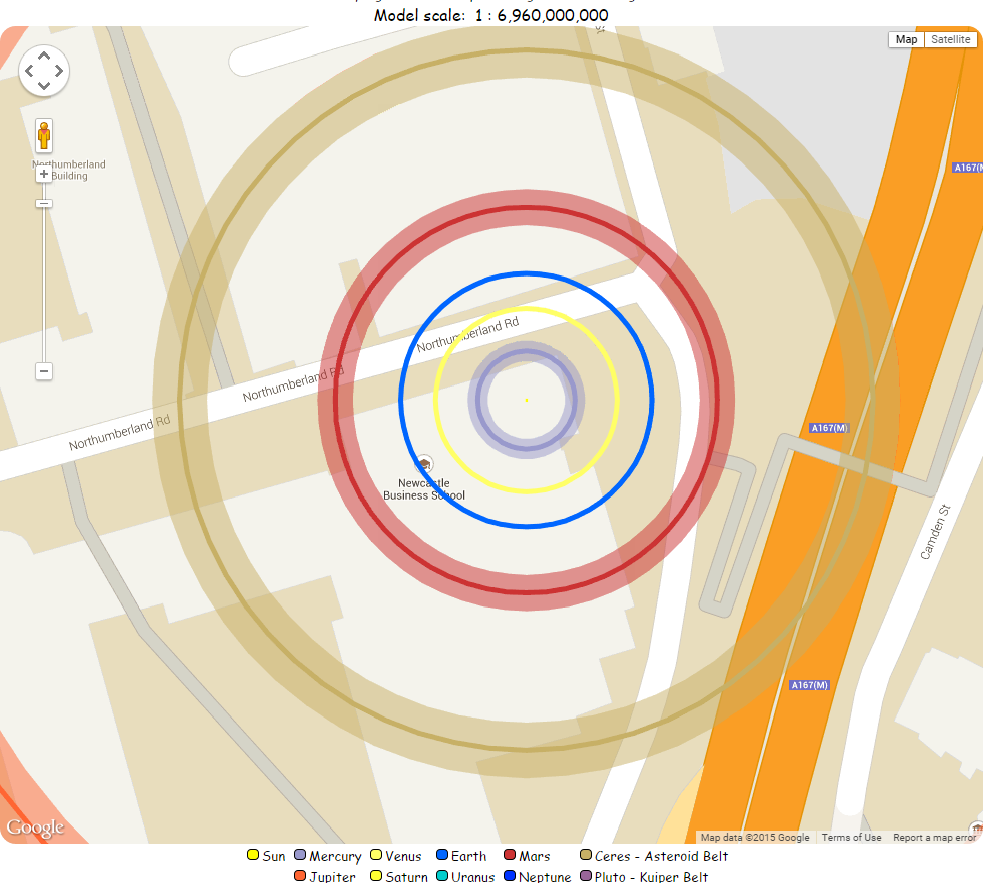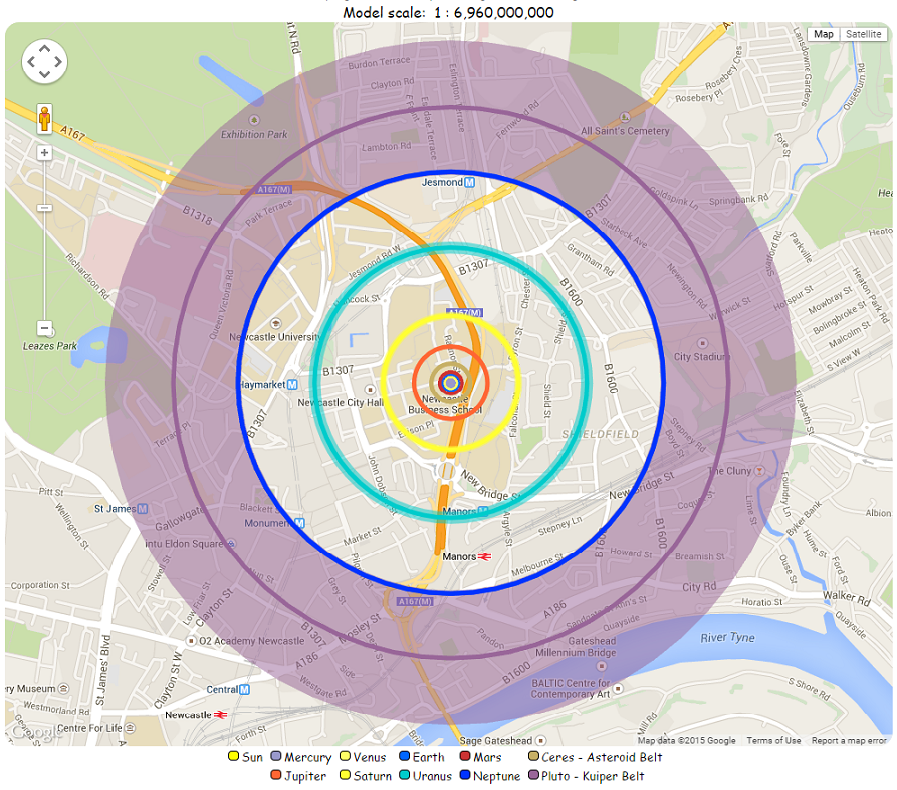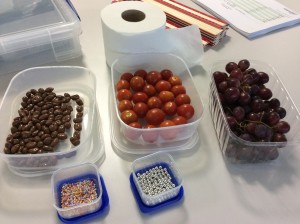Tag Archive for: scale
Tag Archive for: scale
You won’t believe the scale of this activity…
/0 Comments/in Intermediate/by CarolWe recently had a request from a local school for a workshop that linked maths and space. A natural fit, of course, and an example of the sort of workshop we can pull together to fit in with your teaching needs.
As a starter, we looked at the first half of the classic ‘Powers of Ten’ film:
It’s a great film to use to show the massive range of scales over which physics is useful, from galaxies to people to quarks. However, for this session, I wanted to focus just on the journey out to the edge of the observable universe.
After than we turned out attention to our nearest (natural) neighbour – the Moon. Although the diagrams of the solar system often show the Moon as being very close to Earth, you can visualise the distance easily because the Moon is about 10x the diameter of the Earth away from us. Using any ball to represent the Earth, wrap a piece of string around the middle of the ball ten times. Unwrap, and there you have a nice visual representation of how far away the Moon is.
When I was teaching in a school, one of my regular activities was to make a scale model of the solar system. The problem with the solar system is that space is BIG. It’s really hard to create a solar system model which has the same scale for both the diameter of the planets and the distances between the planets. The activity I used for Think Physics is one which is adapted from ‘The Earth as a peppercorn,’ and there are variations on the theme all over the internet.
How big are the planets in relation to each other?
There are online calculators which will allow you to do the scaling without effort, but as we were doing a maths workshop, we got out our scientific calculators and did the maths ourselves. We used a football (diameter 20cm) as the Sun, and used scaling to work out the diameter of the planets. If you don’t want to do your own calculations then I like the Thinkzone version of the solar system calculator. In the picture you can see the options that I offered as possible objects that would be the right size for our model.
Having worked out that hundreds and thousands are about the right size for mercury, silver dragées work for Earth, and cherry tomatoes would be good for Jupiter, we then tried to put the objects in the correct place – using the same scale.
We used a toilet roll to help with the distances (similar to this NRICH activity) – and the students quickly realised that there just wasn’t enough space in our lab. In fact, using our scale (the Sun as a football), the only planet we could fit into Think Lab was Mercury. The maps show where we would have to put our objects.

The orbits of the inner planets, if the sun is 20cm in diameter.

The orbits of the planets (and Pluto) according to our scale model.
If you want to do this activity – you could use the Thinkzone calculator and center the solar system on your own school – you just need your latitude and longitude, which you can find by placing a marker on Google Maps. Students can then work out where their house is on the map, or you could even go on a solar system safari and walk the distances involved using a trundle wheel and your map.


